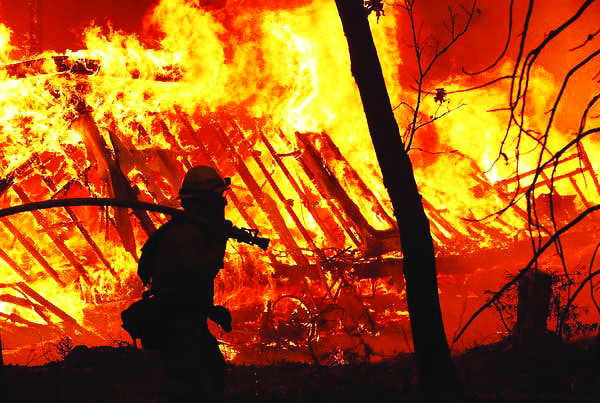
PG&E’s electrical transmission lines are said to have caused the Camp Fire of 2018.

In the past few years, the severity of fires in California has reached dangerous new levels. With massive fires burning hundreds of thousands of acres of land and blackouts cutting off power to millions at a time, it is a pre-apocalyptic scene. Amidst all of the drama, government officials and local as well as national journalists are rushing to pin the blame on the Pacific Gas and Electric Company (PG&E).
One significant factor in the recent increase in fires is PG&E’s mismanagement of its infrastructure. However, PG&E is a public company, and for years they have prioritized satisfying their shareholders over ensuring a safe and modern power infrastructure. PG&E’s power lines, initially built in the early 1900s, are some of the oldest in the world that are still operational. Despite this, PG&E hasn’t done any detailed or regular inspections of their grid until just recently. PG&E also recently diverted more than $100 million in funds from maintaining gas transmission lines to bonuses and profits for stockholders. Although a lot of the blame should go to PG&E, we should also recognize other factors in this issue, such as poor management by the state and local governments.
“Nothing … has changed with PG&E’s infrastructure. What has changed is California’s climate”
California was quick to direct all the blame for the wildfires on PG&E, and for seemingly good reason. However, mismanagement within the California Public Utilities Commission (CPUC) has played a vital role in PG&E’s mismanagement of its infrastructure. The CPUC, initially formed in 1911, is responsible for regulating safety of utilities in the state. However, they didn’t properly regulate PG&E and its lack of maintenance for years, instead mainly focusing on prices charged by utilities. After the San Bruno gas pipeline explosion in 2016, Governor Brown signed into law several CPUC reforms to help deal with the issue of misregulation within the organization.
California’s zoning ordinances, which are managed by county governments, have had massive failures. Counties have allowed houses to be built in areas with very high fire risk, elevating fires’ ability to destroy homes.
In the last few years, nothing significant has changed with PG&E’s infrastructure; what has changed is California’s climate. The combination of drought, rising temperatures and low humidity has led to a much drier state. Since California’s geography causes power lines to travel vast distances through remote areas, if a spark falls from a power line onto some dry vegetation, it can easily spark a fire that is hard to reach and burns fast.
“California’s customers are sure to shoulder an economic burden for many years to come”
With the wide variety of factors that contribute to the brutal wildfire seasons that are becoming the norm in California, we ask ourselves what we can do about these fires. Some have suggested forcing PG&E to move their lines underground. While this could create a safer method of transmitting electricity, the process would be extremely costly. The San Francisco Chronicle reports that the cost to underground one mile of distribution line is about $2.3 million a mile. With PG&E’s holding of more than 100 thousand miles of distribution lines, we can estimate the total price to underground these lines at more than $245 billion. However, the cost would likely be higher, with prices to underground lines in more expensive areas being double or more.
Another idea may be to increase the distance that power lines must remain from trees and other vegetation. Currently, power lines have wiggle room and require a radius of 12 feet around the base of power poles to be free from plant material. However, California’s strong winds, which exceeded speeds of 100 mph this year, can carry vegetation like tree branches much farther than this. Increasing the distance around the power line seems like a reasonable thing to do, as long as its execution is adequately enforced.
There are clearly multiple factors contributing to our current wildfire dilemma. Unfortunately, there are not an equal number of equal, or affordable, solutions to this problem. One thing is certain, California’s tax payers and PG&E’s customers are sure to shoulder an economic burden for many years to come.



